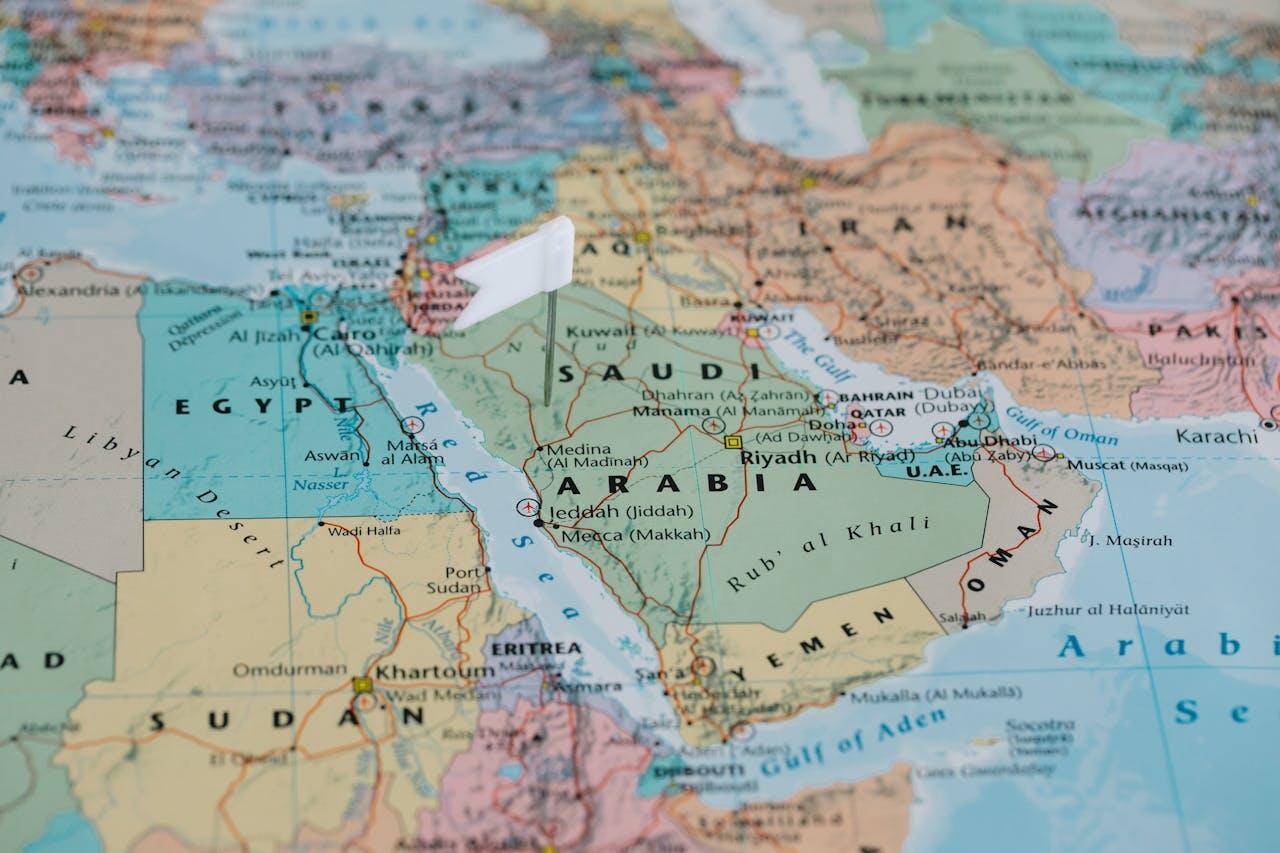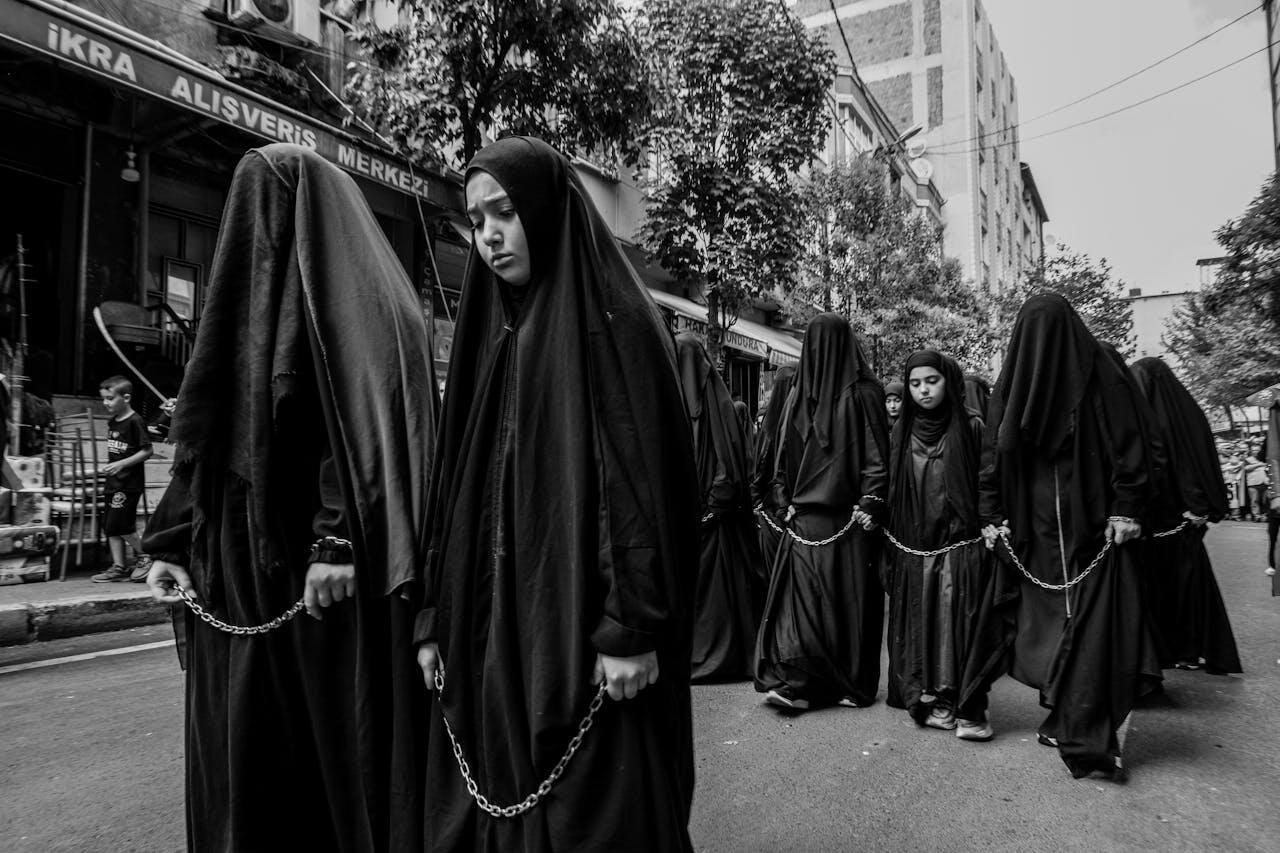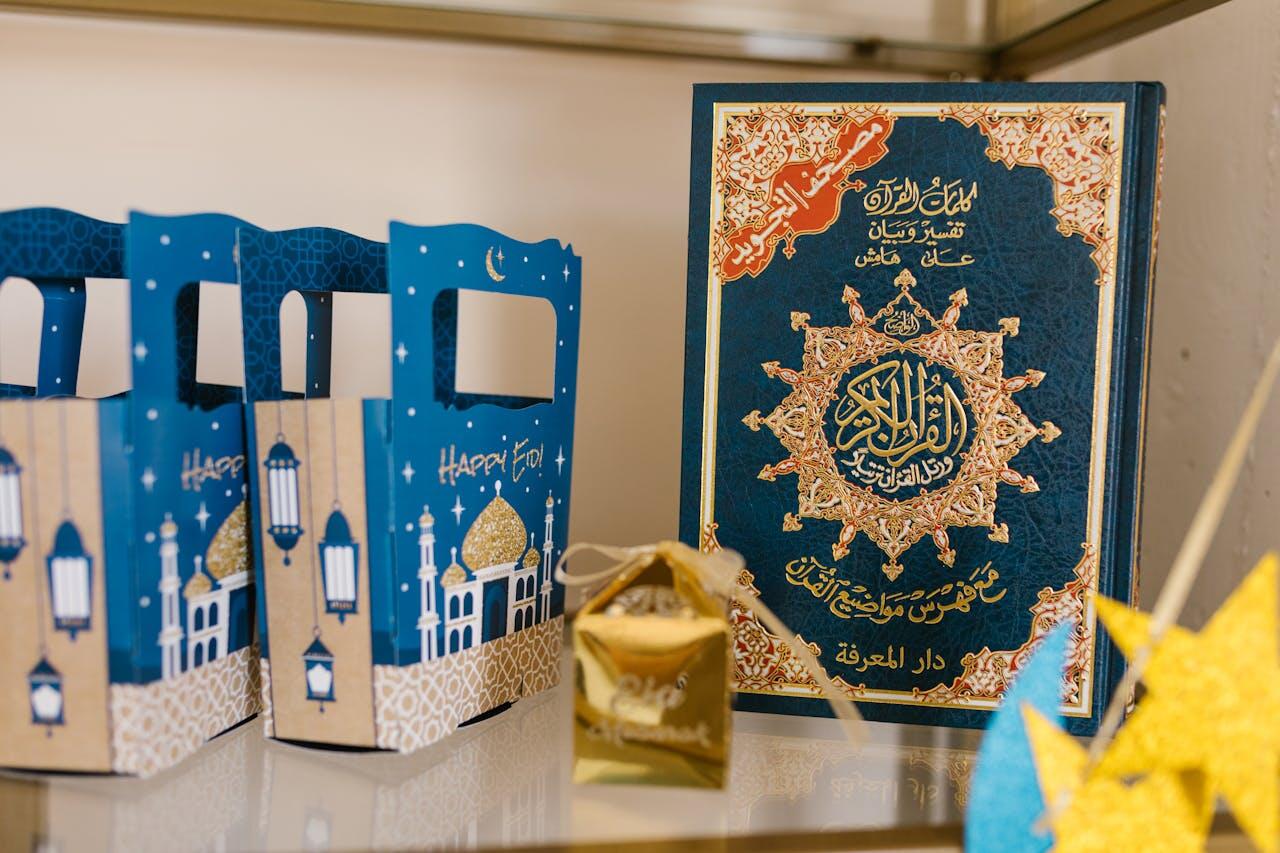While we often hear fireworks and countdown celebrations when the clock strikes midnight on January 1st to mark the beginning of a new year, not every community celebrates the new year on the same date each year according to the Gregorian calendar. Did you know that the Islamic New Year falls on a different date every year? That’s because it follows the Hijri (Islamic) calendar, which is based on lunar cycles rather than the solar cycles used in the Gregorian calendar.
In this article, we'll explore the significance of the Islamic New Year, the Hijri calendar, and other Islamic festivals that revolve around it.

✨ What is the Islamic New Year?
The Islamic New Year falls on the first day of the first month of the Hijri calendar, which is known as 1 Muharram. It commemorates the migration (Hijrah) of the Prophet Muhammad from Mecca to Medina in 622 BC. Some examples of countries that celebrate the Islamic New Year as a public holiday today include Algeria, Morocco, the United Arab Emirates, and Malaysia.
The tentative date for the Islamic New Year in 2026 is June 16 (Tuesday) or June 17 (Wednesday). There may be two possible dates, as some countries celebrate based on direct lunar sighting and officially announce the holiday a day late
📅The Hijri Calendar and Its Structure
Now, let's look at the key characteristics of the Hijri Calendar. It is a lunar-based calendar (based on moon cycles), consisting of 12 months, and is about 11 days shorter than the Gregorian calendar (354 or 355 days).
The Hijri calendar is the guide to every Muslim festival celebrated, in terms of the date of observance, regardless of whether you are in the United Kingdom or Turkey. You'll also notice that the dates of Islamic holidays shift every year relative to the Gregorian calendar.
Here are the names of the 12 Islamic months:
Here's a table detailing the differences between the Hijri calendar and the Gregorian calendar.
| Feature | Hijri (Islamic) Calendar | Gregorian Calendar |
|---|---|---|
| Type | Lunar (based on moon cycles) | Solar (based on sun cycles) |
| Year Length | 354 or 355 days | 365 or 366 days |
| Months | 12 months, 29-30 days each | 12 months, 28-31 days each |
| Year Start Point | Hijrah of Prophet Muhammad in 622 CE | Birth of Jesus Christ (traditionally 1 CE) |
| Relation to Seasons | Shifts about 10-11 days earlier each year | Fixed alignment with seasons |
| Main Use | Religious purposes (e.g., Ramadan, Hajj) | Civil, social, economic purposes worldwide |
| Leap Years | In a 30-year cycle, 11 years have 30 days months to sync with moon | Every 4 years (with exceptions) adds Feb 29 |
| Cultural and Religious Importance | Central to Islamic rituals and identity | Worldwide standard civil calendar |
🕌 Significance of Muharram in Islam
Muharram is widely commemorated for historical and religious purposes. As mentioned earlier, it is tied to the migration of Prophet Muhammad with his companions from Mecca to Medina to avoid persecution. It was also in Medina where he established the first Islamic state. 1 Muslims today are often encouraged to reflect on the suffering and sacrifices endured by the Prophet during this month.

Additionally, Muharram is also one of the four sacred months in Islam, where believers are forbidden to resort to violence (unless for self-defence) and are encouraged to increase their practice of worship. One significant celebration in Islam is the Ashura, which falls on the 10th day of Muharram, where believers are encouraged to fast and commemorate several events:
- The martyrdom of Imam Hussain during the Battle of Karbala
- The journey of Prophet Musa and the Israelites when they were delivered from Pharaoh in Egypt
🔍 Determining the Date of the Islamic New Year
Every year, Muslims celebrate the Islamic New Year on different dates, and after sunset (evening time). So, how do Muslims know when to celebrate the Islamic New Year?
🌙 Lunar Observations and Moon Sighting
The beginning and end of the Islamic New Year are determined by lunar observation and moon sighting — a practice that Prophet Muhammad advocated for believers to fast whenever the crescent moon (Hilal) is observed. Moon sighting is also an important practice to determine the beginning of Ramadan, a month of fasting and reflection. 2
They ask you ˹O Prophet˺ about the phases of the moon. Say, “They are a means for people to determine time and pilgrimage.”
Surah Al-Baqarah (2:189)
The Islamic calendar is dependent on the lunar cycle, which is about 29.5 days. So the Islamic month will only have 29 or 30 days.
The new month begins when the crescent is clearly visible (usually on the 29th day). If it is not sighted, the new month will begin the next day (the previous month now has 30 days).
Historically, the UK has followed the moon-sighting criteria of Morocco, but there has been more call to adopt a Local Moon Sighting System 3 as advocated by the Islamic Crescents Observation for the UK (ICOUK), a religious organisation established in 2008.

🕰️ Islamic New Year Dates for Upcoming Years
Now that we have understood how to determine the dates, let's look at the estimated dates Islamic New Year for the upcoming years.
| Gregorian Year | Hijri Year | Estimated Date (1 Muharram) | Day of the Week |
|---|---|---|---|
| 2025 | 1447 AH | June 26, 2025 | Thursday |
| 2026 | 1448 AH | June 16, 2026 | Tuesday |
| 2027 | 1449 AH | June 6, 2027 | Sunday |
| 2028 | 1450 AH | May 25, 2028 | Thursday |
| 2029 | 1451 AH | May 14, 2029 | Monday |
| 2030 | 1452 AH | May 3, 2030 | Friday |
Important note: The moon's visibility can be influenced by various factors, including weather, location, and time zones. Hence, the exact date of the Islamic New Year in different countries (according to the Gregorian calendar) can vary. Additionally, not every country relies on local moon sightings and may wait for the nearest neighbouring countries to make the official announcement of the New Year dates.

🎉Traditions and Observances of the Islamic New Year
Moving on, let's review what Muslims actually do during the Islamic New Year and how this significant festival is celebrated across the globe.
Muharram means forbidden in Arabic, which is why it is violence is forbidden during this month alongside the four sacred months of the Hijri calendar.
🙏 Religious Practices and Reflections
During this month, Muslims generally engage in more private prayer to seek forgiveness and fasting, especially on the 10th day of Muharram, which is Ashura. However, there is a slight distinction in how the two major Islamic sects observe Ashura:
Shia
- Encouraged to join public mourning processions
- Wear black to display mourning to commemorate the events of the Battle of Karbala
Sunni
- Encouraged to recite the Qur'an, do charity silently and in private
- Listen to sermons at mosques while reflecting on their spiritual goals for the new year
🌏 Cultural Variations Across the Muslim World
The celebration of Muharram and Ashura varies across the globe, largely influenced by the predominant religious sect in each country. For example, South East Asian countries like Malaysia and Indonesia have a predominantly Sunni Muslim community. They gazetted the Muharram as a national public holiday (Awal Muharram) to have a quiet celebration which emphasises more on thanksgiving through reflection and fasting.
On the other hand, Middle Eastern countries like Iran and Lebanon have a predominantly Shia Muslim population.

The observance places greater emphasis on mourning and grief, with public reenactments of the events of the Battle of Karbala, including scenes depicting how women and children were taken captive.
🌟The Islamic New Year in the Context of the Gregorian Calendar
Now that you understand the structure of the Hijri calendar and its significance, it’s time to review the Islamic New Year in relation to the Gregorian calendar, which is used as the civil calendar in most countries.
🔄 How the Islamic New Year Date Shifts Annually
In the Hijri calendar system, it is 10 to 12 days shorter than the Gregorian calendar. That's why the start of the Islamic New Year shifts earlier than the Gregorian calendar each year. That's why when you look at the earlier table of Islamic New Year dates, the upcoming dates are always earlier than the previous ones.
1 Muharram 2025
June 26, 2025
1 Muharram 2026
June 16 2026
1 Muharram 2027
June 6 2027
This also means that the months of the Islamic calendar would eventually rotate through all the seasons. For example, Muharram from 2025 to 2027 could be during the summer season (in the UK), but in a few years, it could be in winter, spring, or autumn. The same principle would also work for Eid celebrations like Eid al-Fitr and Eid al-Adha.
Useful tip: Being aware of these shifts can help people plan when it comes to their daily lives, whether they are Muslims or non-Muslims, especially in these three key areas:
💡 Importance of the Islamic New Year in the Global Context
In many Muslim predominant countries, the Islamic New Year is widely recognised as a national public holiday. This enables Muslim families to spend time as a family while devoting themselves to religious practices.

It is also gaining increasing recognition in non-Muslim majority countries, whether in educational institutions or workplaces, as a way to promote interfaith dialogue in a growing multicultural society with a large global Muslim diaspora.
Spiritually, it serves as a uniting celebration among the Muslim community to reflect on the historical and religious significance of Hijrah by the Prophet Muhammad. It is also a period of communal reflection, thanksgiving, and devotion to become a better person for the new year.
We hope this article has offered you some insights into the Islamic New Year. If you want to dive deeper into the Hijri calendar and other Islamic festivals, you might want to learn Arabic, as it is the main language of the Islamic diaspora. Feel free to connect with an experienced Arabic tutor via Superprof to have the best personalised one-to-one tutoring, anywhere and anytime you want.
References
- Muharram 2025 - the month of Allah | Islamic Relief UK. (n.d.-a). https://www.islamic-relief.org.uk/resources/islamic-calendar/muharram/
- Surah Al-Baqarah - 189 - Quran.com. (n.d.). Quran.com. https://quran.com/al-baqarah/189
- Moon Sighting UK. (2022, November 27). Towards local moon Sighting (UK). Moon Sighting UK. https://moonsighting.org.uk/moon/publications/articles/analysis/towards-local-moon-sighting-uk.html















